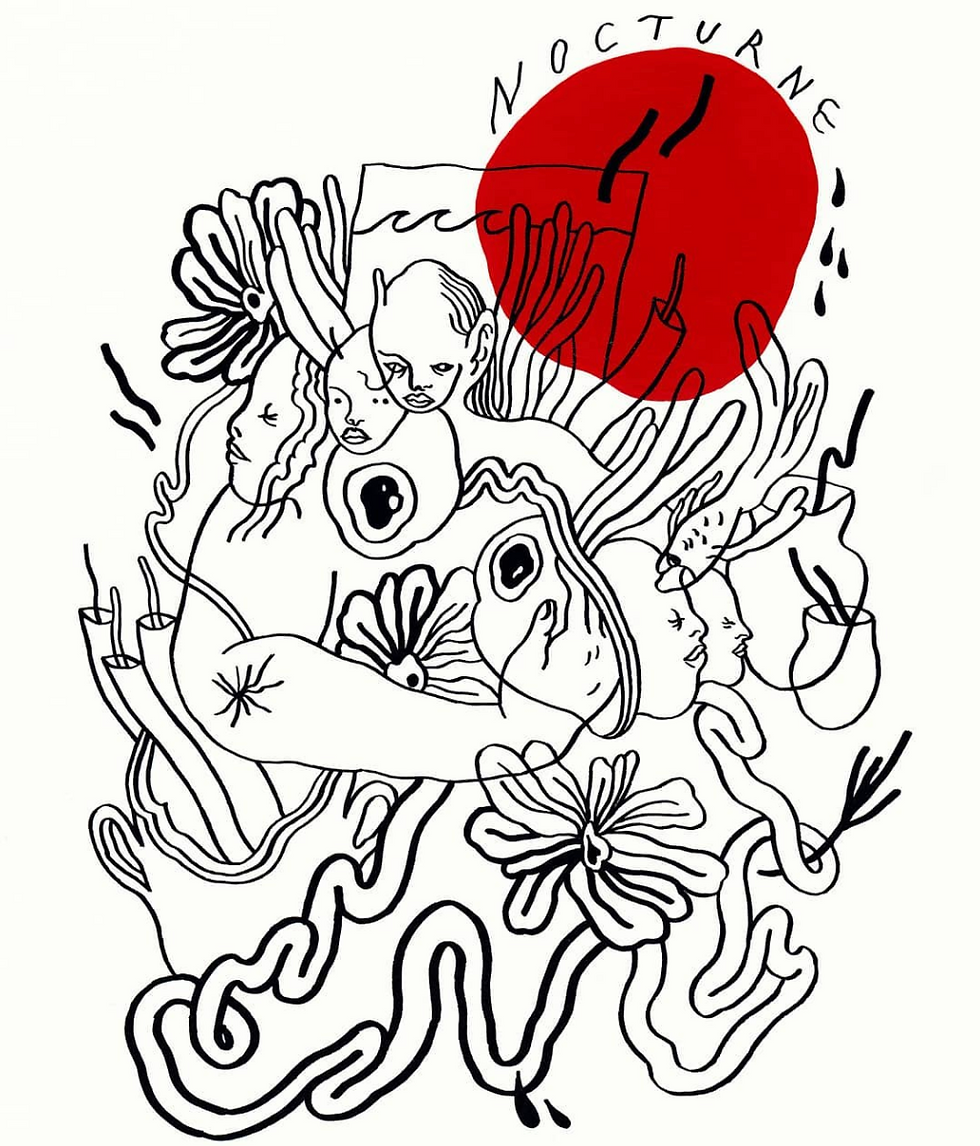A Case for "Bad" Poetry
- Rachel Stempel

- Sep 17, 2020
- 2 min read
Updated: May 19, 2021

Art by Austin Lee (IG: @austinleee)
To appraise a poem based only on what the industry defines as its "craft value" is an act of erasure.
I’ve written my fair share of irresponsible poems, by which I mean I’ve written purely for myself and worse—I’ve approached writing as something outside myself and looked for that distance in the work of others.
I’ve written my fair share of irresponsible poems, by which I mean I once viewed craft as objective.
It starts with denouncing rhyme—something you might be warned against in a workshop as being gimmicky or childish. No right-minded wordsmith praises rhyme in the 21st century—language is too broad and a poem too narrow to waste space on predictability.
Predictability, you learn, is the enemy. This perspective isn’t new. Elizabethan culture industry had it out for rhyme as part of a political agenda in favor of European nationalism. Rhyme and meter were associated with lower forms of language—if the verse of all spoken language could find common ground in rhyme and meter, how could you gatekeep poetry as an industry?
The exclusivity attributed to poetry stems from this opposition to predictability, to pattern. In order for a poem to be “good,” it must move unpredictability. It must require skill to decipher. It must exist only for and by the tastemakers, which is to say, you are too poor to be a reader or writer of it. (After all, the word "classical" as a literary term derives from "auctor classicus," or "tax-paying author.")
The insistence that an artform’s value is inversely proportional to its accessibility isn’t limited to poetry. But this particular insistence is most inspiring when it comes to the opposing reclamation—poetry by and for the people. Or, using language for its intended purpose: connection.
The lyricism of a line needn’t be sacrificed to enter into a contract with any reader. To appraise a poem based only on what the industry defines as its "craft value" is an act of erasure. To value "pure" aesthetic is to admit your aversion to identity politics has nothing to do with art but with maintaining your coterie.
The close reading approach we learn in grade school comes from a movement aimed at protecting Western canon from critiques of its whiteness, maleness, and heteronormativity. The white academics behind New Criticism argued for the self-containment of a canonized piece, that its transcendence is in spite of the context of its creation, not because of it. (But how can we talk about Nathaniel Hawthorne as an outlier among his similar-sounding peers if we can’t mention how often he harassed his friends in publishing?)
Reading poetry for self-containment as a scholar is irresponsible but also lazy. Writing that exists only to limit its audience is irresponsible but also lazy. When I see niche literary magazines pop up and grow on Twitter, I know poetry is being reclaimed in protest.
The platforms granted by culture industry are self-serving, hellbent on the social strata implied by a clear delineation between high and low art. When that delineation can no longer be made, Dear Reader, the floodgates will open.








![[The] Magical [in] Realism](https://static.wixstatic.com/media/f6b3b7_a5e2fea43a2f4f3aac6bfe2ab61193e3~mv2.jpg/v1/fill/w_980,h_653,al_c,q_85,usm_0.66_1.00_0.01,enc_avif,quality_auto/f6b3b7_a5e2fea43a2f4f3aac6bfe2ab61193e3~mv2.jpg)
Comments